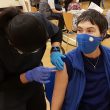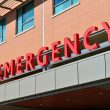Local governments can expand and enhance access to health care
Editor’s note: In a special series, Larry Morrissey will examine three major factors affecting local government’s ability to tackle health care challenges and save money on their health care spend—and the implications it has for their constituents and employees.
When the COVID-19 pandemic hit in March of 2020, primary care appointments across the nation plummeted by 60 percent, forcing many offices to close as patients deferred care. Lost were the routine physical exams and screenings that may have detected, monitored or treated conditions like diabetes, high blood pressure or cancer. This new health care reality hit local governments in multiple ways.
While traditional primary care offices closed, that left local emergency services as the best remaining care option for many community members. In some communities, this led to increased calls to local 911 centers exposing first responders to added risk and anxiety. Moreover, the combination of increases in violent crime and social justice protests placed significant demands on law enforcement resources amid already stressed personnel and budgets. As the needs of the community rose, so too did the needs of public servants who were doing their best to serve them.
These added demands and stresses on public servants led to increased impacts on their own physical and mental health. In some cases, this reality led to early retirements or simply leaving public careers entirely. To help offset the increased health care burdens of serving the community and to support their own employees, many cities turned to virtual care as a way to supplement and enhance care delivery.
Mobile integrated care + virtual care
Prior to the pandemic, many communities had developed Mobile Integrated Health (MIH) options for delivering care to community members as an alternative to the costly option of an ambulance transport to a hospital for delivery of emergency department services. Using 911 call data, local governments have been able to identify so-called “frequent flyers” who tended to use the EMS system for reactive care. Typically partnering with local medical systems, those communities can deliver care proactively through a prevention-based approach prior to the 911 call coming into their system. The Centers for Medicare & Medicaid Services has begun to embrace this approach, unveiling the Emergency Triage, Treat and Transport (E3) payment model in 2019.
When the pandemic hit, some communities leveraged this model to proactively engage community members who might have greater risk due to COVID-19, diverting service calls that might otherwise wind up as 911 emergency calls. These communities also pivoted like hospital systems and other health-care providers to virtual appointments. Leveraging MIH and virtual care helped them to lower risks, lower costs and prevent unnecessary in-person visits and hospital admissions. Communities that applied the same type of population health approach for their own employees were able to maintain services and care for their people throughout the pandemic.
Leveraging direct contracting and virtual delivery for government employees
When the pandemic hit, cities, counties and school districts who partnered with a worksite health provider were able to leverage the data and relationships they already had to proactively reach out to at-risk members once the pandemic began to maintain critical primary care services and relationships.
“After the World Health Organization declared a global pandemic in March 2020, our clinicians proactively reached out to our highest risk patients,” said Dr. Jeff Wells, CEO and co-founder of Marathon Health. “We literally made over 500,000 calls and sent countless messages to our most vulnerable members to ensure that they received the care they needed during this difficult time.”
Outreach like this generally does not occur in traditional fee-for-service primary care practices that are transaction driven. A proactive care model built on a population health approach of predicting, addressing and preventing disease empowers care teams to do more than just respond to a health crisis. This proactive model enables virtual care technology to be a true primary care platform as illustrated in the following testimonial:
“During this stressful time, I received a call to see how I was doing. The care in the nurse’s voice was so welcomed. It also triggered a reminder that I was almost out of medicine. The nurse scheduled a virtual visit with the provider that afternoon and my refills were called in. Her contacting me showed how much you truly care for your patients. Thank YOU for going above and beyond.”-Wendi L., from Indiana, patient at a nationally recognized worksite health provider
Moving forward – The American Rescue Plan
Maintaining critical services to citizens during the pandemic compelled a health-first approach for local governments who had to keep their own personnel healthy to serve their citizens. Using data to support proactive health monitoring and leveraging virtual care technologies to improve access became an effective approach during the pandemic, and it has long-term implications.
Local governments have a unique opportunity to pivot from the model being a temporary approach during a crisis to become a standard practice for improving outcomes. With federal funds targeted to state and local governments and territories through the American Rescue Plan, there is a significant opportunity, including investments in MIH and virtual care to improve outcomes for citizens, and investments in employer-sponsored health centers to improve outcomes for frontline employees.
Taken together, the model creates an opportunity to fundamentally and permanently improve care delivery for both citizens and the public employees that serve them. These innovations offer the opportunity to improve access, quality, and outcomes. Now is the time to make new workflows and strategies developed during the pandemic a permanent fixture and best practice for local governments, improving health outcomes and creating more resilient and sustainable communities.
This is the second of a three-part series by Larry Morrissey, former mayor of Rockford, Ill., and current vice president of government affairs for Marathon Health, that will exam three major factors affecting local governments’ ability to tackle health care challenges and save money on their health care spend, and the implications it has for their constituents and employees. The first instalment can be read here. In his next article, Morrissey will explore how environmental and socioeconomic factors impact health outcomes.




















